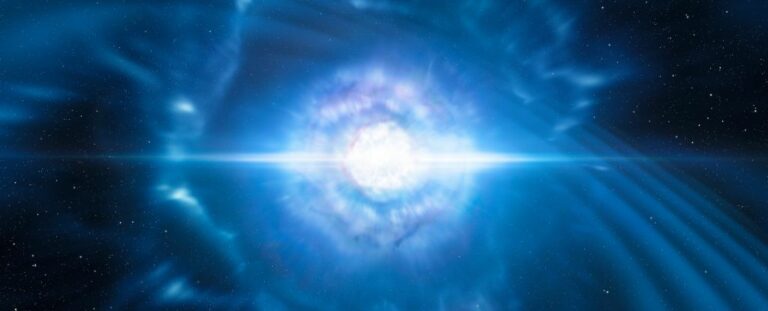Ancient Stars Produced Elements Heavier Than Anything Previously Discovered in Nature
The team of astronomers, led by Ian Roederer from the University of Michigan, has reached a significant conclusion regarding the capabilities of stars during the early stages of the universe. Through their examination of 42 stars within the Milky Way, they have discovered chemical abundances that can only be explained by the production of elements with atomic masses exceeding 260.
Stars play a crucial role in the creation of elements in the universe, particularly those heavier than hydrogen. Fusion is the primary process through which stars generate these elements. At the core of a star, atoms are fused together, resulting in the formation of heavier elements.
However, this fusion process can only produce elements up to iron. The fusion of iron into even heavier elements requires an immense amount of energy, surpassing what is generated. Consequently, the star undergoes self-destruction.
Another method of element creation is associated with this self-destruction. During supernova explosions, as a star reaches the end of its life, and kilonova explosions, which occur when two neutron stars collide, conditions become favorable for the rapid neutron-capture process, also known as the r-process.
During the r-process, an abundance of free neutrons combines with available nuclei, leading to the formation of heavier elements. This process necessitates an extremely energetic environment, such as a supernova.
Furthermore, the r-process occurs rapidly, as indicated by its name. This process is responsible for the production of elements like gold, platinum, thorium, and uranium. However, there is still much to learn about the intricate mechanisms behind element creation.
Roederer explains that although we have a general understanding of how the r-process operates, the conditions under which it occurs are extremely intense. We lack knowledge regarding the various types of sites in the Universe capable of generating the r-process, the ultimate outcome of the process, and the maximum number of neutrons that can be added. Additionally, we are uncertain about the maximum weight an element can attain. To address these uncertainties, the team decided to investigate elements that could potentially be formed through fission in well-studied ancient stars. This approach aimed to provide insights into these unanswered questions.
Another method through which elements can be formed is nuclear fission. Unlike fusion, where atoms combine, nuclear fission involves the splitting of an atom, resulting in the creation of a less massive element.
The chemical compositions of the 42 stars in the Milky Way that Roederer and his team examined have been extensively studied and established.
The initial stars in the Universe primarily consisted of hydrogen. These stars synthesized elements within their cores and eventually perished, dispersing the created elements into the surrounding space. Subsequent generations of stars incorporated these elements.The stars analyzed by the researchers are known to contain elements produced by the r-process during supernova explosions.
However, the focus of the study was not on r-process elements but rather on elements that could be generated through fission, such as ruthenium, rhodium, palladium, and silver. Instead of studying the stars individually, the researchers conducted a collective analysis of the group.
A pattern was discovered by the researchers. If the metals examined by the team were created by the r-process, it was expected that certain other elements would be present in specific abundance ratios. However, these ratios were not found. As a result, the team concluded that the elements in question were produced through fission.
This implies that the early stars, which produced these metals, must have generated elements that were much heavier, surpassing an atomic mass of 260. These heavier elements then underwent splitting to form lighter and more stable elements.
Interestingly, these elements have never been observed to occur naturally anywhere. Although they have been observed in laboratories, their half-lives are extremely short, causing them to decay almost immediately.
Nevertheless, the research indicates that by examining the potential fission products of these elements, we can gain insights into the likelihood and prevalence of their formation in the vast expanse of the Universe.
“The significance of the atomic mass of 260 lies in the fact that we have never previously detected anything that heavy in space or naturally on Earth, not even during nuclear weapon tests,” explains Roederer.
“However, observing them in space provides us with valuable guidance in terms of understanding models and fission processes, and it could offer us insights into the origins of the diverse range of elements.”
This article is republished from sciencealert under a Creative Commons license. Read the original article.
Do not forget to share your opinion with us to provide you with the best posts !




0 Comments